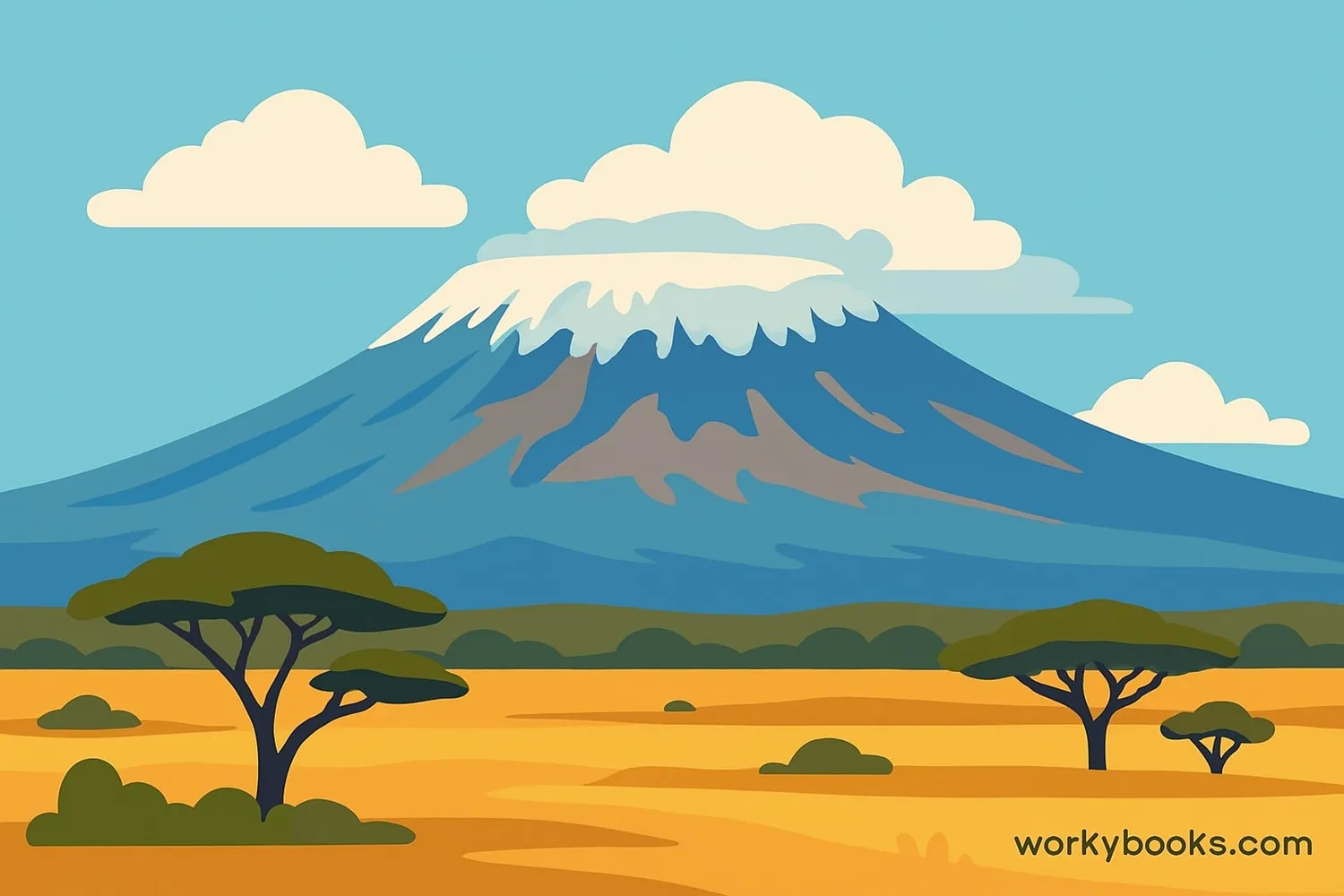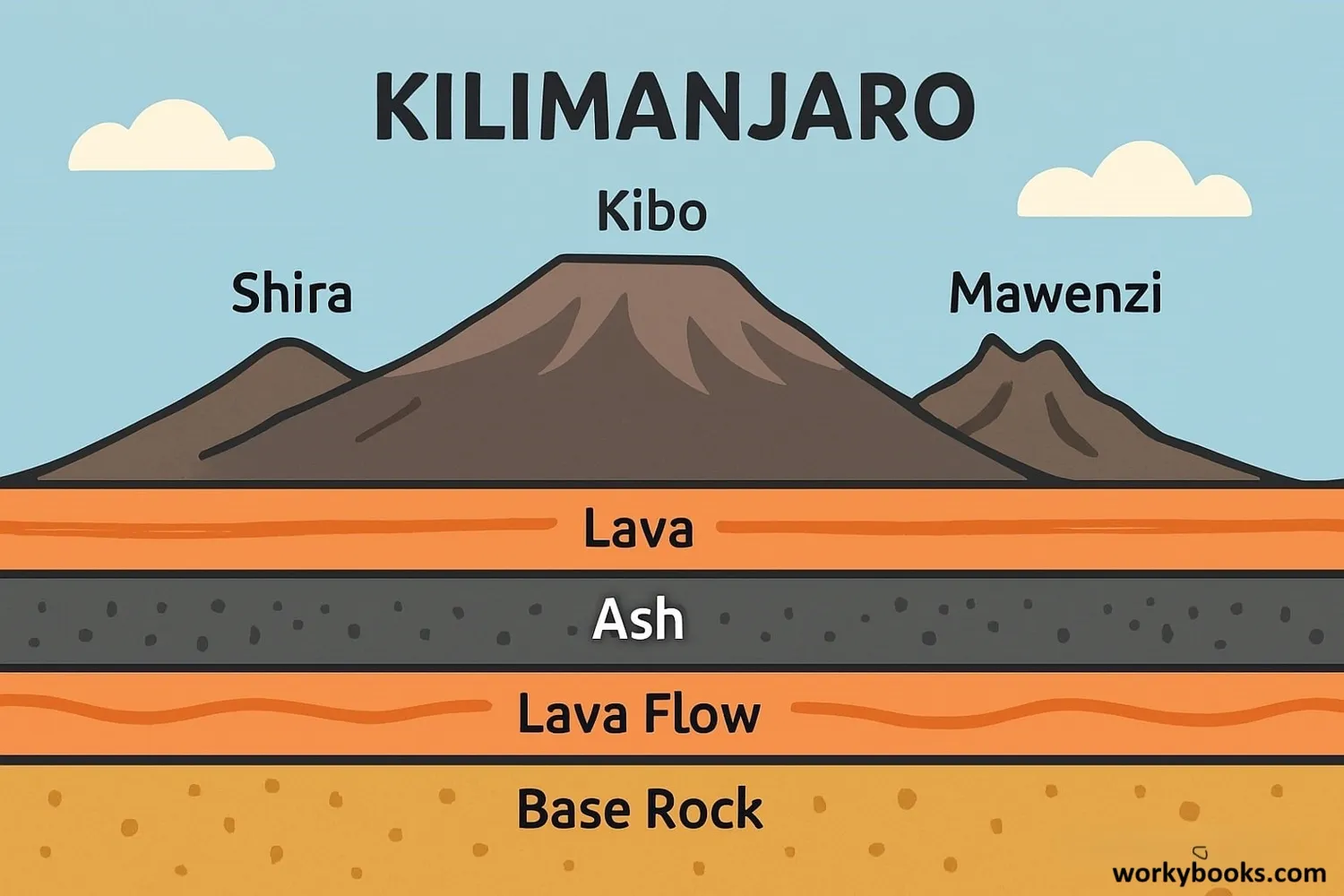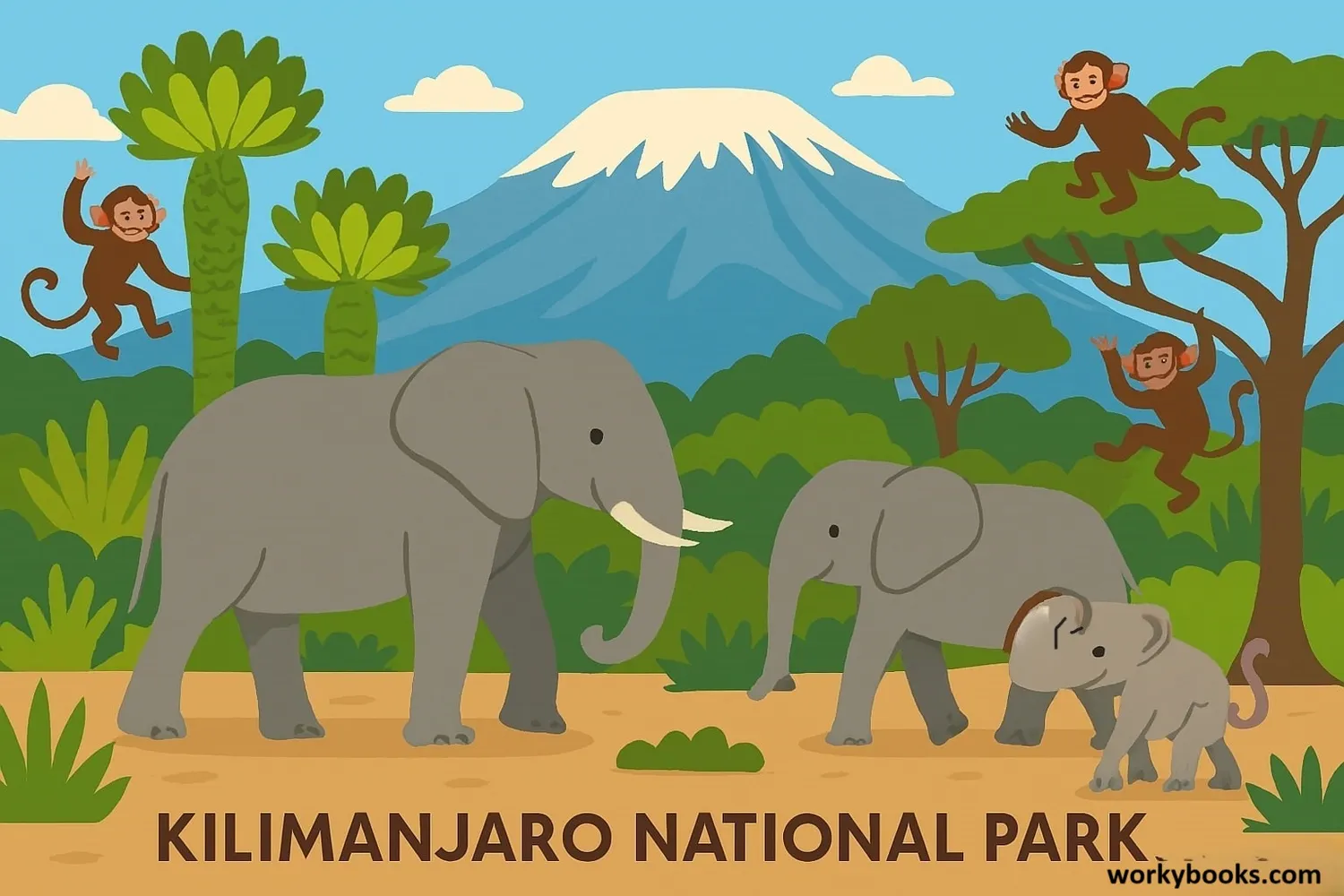Mount Kilimanjaro - Definition, Examples, Quiz, FAQ, Trivia
Discover Africa's highest mountain and its unique geography
What is Mount Kilimanjaro?

Mount Kilimanjaro is Africa's highest mountain, standing at 5,895 meters (19,341 feet) above sea level. Located in Tanzania, East Africa, it's a dormant volcano with three volcanic cones: Kibo, Mawenzi, and Shira.
What makes Kilimanjaro special is that despite being near the equator, it has permanent glaciers and snow on its summit. This "snow on the equator" phenomenon attracts scientists and climbers from around the world.
Did You Know?
Kilimanjaro is the world's tallest free-standing mountain, meaning it doesn't belong to a mountain range.
Geography & Formation

Kilimanjaro formed from volcanic activity over a million years ago. The mountain has five main ecological zones that climbers pass through:
The mountain's location near the equator means it experiences both wet and dry seasons. Its glaciers have shrunk by over 80% since the early 20th century, making it an important site for climate change studies.
Climbing Expeditions

Climbing Mount Kilimanjaro is a popular challenge that attracts about 35,000 people each year. While no technical climbing skills are required, the high altitude makes it physically demanding. There are several established routes:
Marangu Route
Known as the "Coca-Cola" route with hut accommodations
Machame Route
Called the "Whiskey" route, more scenic but steeper
Lemosho Route
Longer route with beautiful scenery and high success rate
Climbers typically take 5-8 days to reach the summit to properly acclimatize to the altitude. Local guides are essential for safe climbs, and they also provide cultural insights about the mountain and Tanzania.
Altitude Challenge
At the summit, oxygen levels are only about 50% of what they are at sea level, making breathing difficult.
Conservation & Importance

Mount Kilimanjaro is protected within Kilimanjaro National Park, a UNESCO World Heritage site. Conservation efforts focus on:
Forest Protection
Preserving the mountain's critical rainforest ecosystem
Glacier Monitoring
Tracking the retreat of Kilimanjaro's glaciers
Community Involvement
Engaging local communities in conservation
The mountain is culturally significant to the Chagga people who live on its slopes. They consider the mountain sacred and have traditional beliefs about its spirits. Kilimanjaro also provides water to surrounding communities and supports diverse ecosystems.
Mountain Knowledge Quiz
Test what you've learned about Mount Kilimanjaro with this quiz. Try to answer all 5 questions!
Frequently Asked Questions
Here are answers to common questions about Mount Kilimanjaro:
Mountain Trivia
Discover fascinating facts about Mount Kilimanjaro:
First Ascent
The first recorded summit was in 1889 by German geographer Hans Meyer, Austrian climber Ludwig Purtscheller, and their local guide Yohani Kinyala Lauwo.
Age Records
The youngest person to summit was American Coaltan Tanner at age 6 in 2018. The oldest was 89-year-old American Anne Lorimor in 2019.
Name Meaning
The name "Kilimanjaro" likely comes from the Swahili words "Kilima" (hill) and "Njaro" (whiteness), meaning "shining hill" or "white mountain."
Glacial History
Kilimanjaro's glaciers have existed for more than 11,000 years. The ice cap once covered over 150 square kilometers but now covers less than 2 square kilometers.


